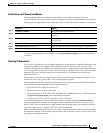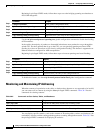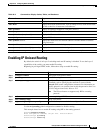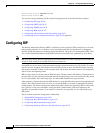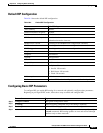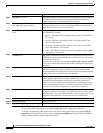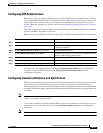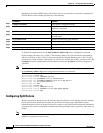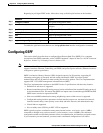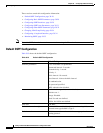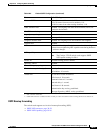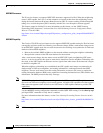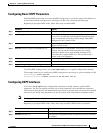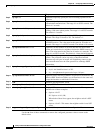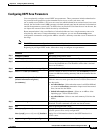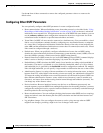
38-25
Catalyst 3750-E and 3560-E Switch Software Configuration Guide
OL-9775-02
Chapter 38 Configuring IP Unicast Routing
Configuring OSPF
Beginning in privileged EXEC mode, follow these steps to disable split horizon on the interface:
To enable the split horizon mechanism, use the ip split-horizon interface configuration command.
Configuring OSPF
This section briefly describes how to configure Open Shortest Path First (OSPF). For a complete
description of the OSPF commands, see the “OSPF Commands” chapter of the Cisco IOS IP Command
Reference, Volume 2 of 3: Routing Protocols, Release 12.2.
Note OSPF classifies different media into broadcast, nonbroadcast, and point-to-point networks. The switch
supports broadcast (Ethernet, Token Ring, and FDDI) and point-to-point networks (Ethernet interfaces
configured as point-to-point links).
OSPF is an Interior Gateway Protocol (IGP) designed expressly for IP networks, supporting IP
subnetting and tagging of externally derived routing information. OSPF also allows packet
authentication and uses IP multicast when sending and receiving packets. The Cisco implementation
supports RFC 1253, OSPF management information base (MIB).
The Cisco implementation conforms to the OSPF Version 2 specifications with these key features:
• Definition of stub areas is supported.
• Routes learned through any IP routing protocol can be redistributed into another IP routing protocol.
At the intradomain level, this means that OSPF can import routes learned through EIGRP and RIP.
OSPF routes can also be exported into RIP.
• Plain text and MD5 authentication among neighboring routers within an area is supported.
• Configurable routing interface parameters include interface output cost, retransmission interval,
interface transmit delay, router priority, router dead and hello intervals, and authentication key.
• Virtual links are supported.
• Not-so-stubby-areas (NSSAs) per RFC 1587are supported.
OSPF typically requires coordination among many internal routers, area border routers (ABRs)
connected to multiple areas, and autonomous system boundary routers (ASBRs). The minimum
configuration would use all default parameter values, no authentication, and interfaces assigned to areas.
If you customize your environment, you must ensure coordinated configuration of all routers.
Command Purpose
Step 1
configure terminal Enter global configuration mode.
Step 2
interface interface-id Enter interface configuration mode, and specify the interface to
configure.
Step 3
ip address ip-address subnet-mask Configure the IP address and IP subnet.
Step 4
no ip split-horizon Disable split horizon on the interface.
Step 5
end Return to privileged EXEC mode.
Step 6
show ip interface interface-id Verify your entries.
Step 7
copy running-config startup-config (Optional) Save your entries in the configuration file.



